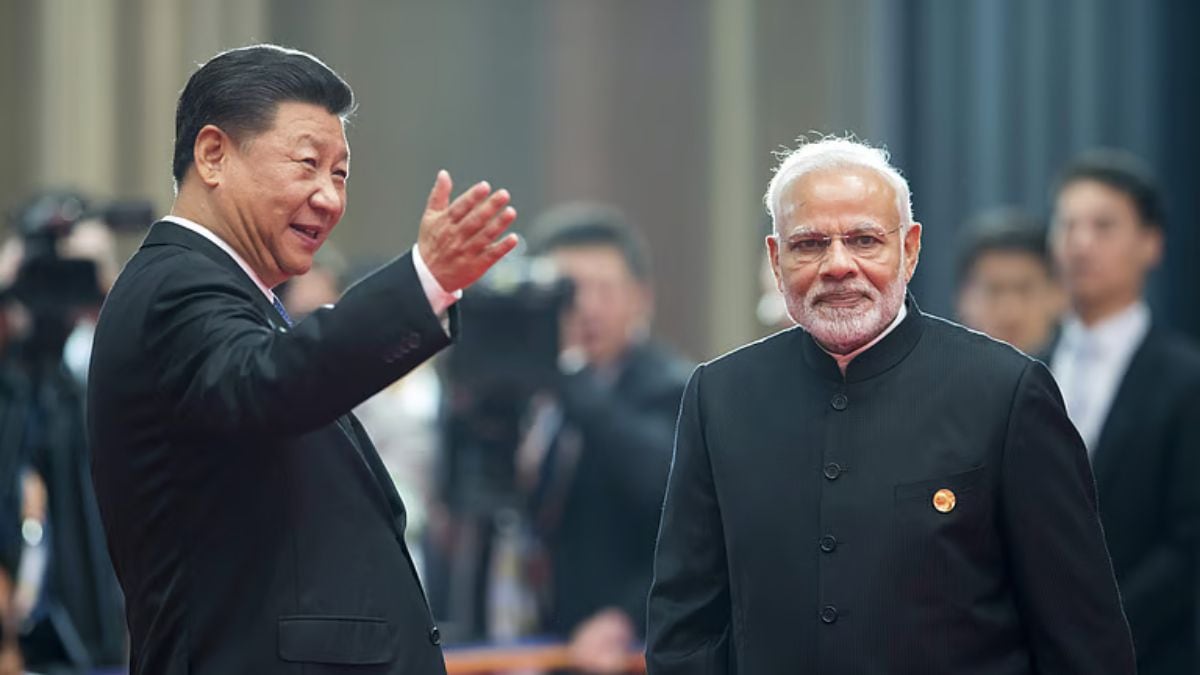Prime Minister Narendra Modi’s bilateral meeting with Chinese President Xi Jinping has begun in Tianjin, the Chinese city hosting the 25th Shanghai Cooperation Organisation (SCO) Summit. Sources in India’s external affairs ministry said the bilateral summit talks were scheduled for 20 minutes as the two leaders discuss the broad contours of India-China relations, and geopolitical situation.
Tianjin is buzzing with anticipation this weekend as lights, flags, and banners transform the city into a showcase for the SCO Summit. Prime Minister Narendra Modi’s arrival on Saturday evening — his
first visit to China in more than seven years — has drawn global attention.
STORY CONTINUES BELOW THIS AD
PM Modi posted on social media soon after landing, “Landed in Tianjin, China. Looking forward to deliberations at the SCO Summit and meeting various world leaders.”
Earlier, PM Modi was awarded a warm cultural welcome at his hotel where artistes performed Indian classical music and dance, symbolising goodwill between the two countries. Tianjin, usually better known for its bustling markets and river views, has taken on a festive air as world leaders gather for the SCO summit.
VIDEO | China: Visuals from Tianjin, the host city of the SCO Summit (August 31–September 1).
PM Narendra Modi (@narendramodi) is scheduled to hold bilateral meetings with Chinese President Xi Jinping and Russian President Vladimir Putin on the sidelines of the summit.… pic.twitter.com/HHkybmUFgP
— Press Trust of India (@PTI_News) August 31, 2025
Two giants and a thaw in the chill: The Modi-Xi calculus
While the SCO’s official agenda includes security, economic cooperation, digital transformation, and climate issues, all attention is focused on the much-anticipated meeting between Modi and Chinese President Xi Jinping. It’s their first substantial dialogue in years marked by military face-off in eastern Ladakh, triggering turbulence in trade, and — most recently — a sharp chill in India-US ties due to new Washington tariffs.
The timing is as delicate as the choreography outside the summit venue.
#WATCH | Tianjin, China: A group of Odissi dancers gives a glimpse into their performance. They performed to welcome PM Narendra Modi to the city. pic.twitter.com/f6GLNoUEPh
— ANI (@ANI) August 30, 2025
STORY CONTINUES BELOW THIS AD
PM Modi’s own words, shared with Japan’s The Yomiuri Shimbun before arriving, built expectations, “Given the current volatility in the world economy, it is also important for India and China, as two major economies, to work together to bring stability to the world economic order.” Officials suggest the leaders are expected to take stock of economic ties and discuss steps to restore trust — critical after the bloody Galwan Valley standoff in 2020.
Relations have shown small but steady signs of a reset. Just weeks ago, Chinese Foreign Minister Wang Yi met Indian leaders including PM Modi, External Affairs Minister S Jaishankar and National Security Adviser Ajit Doval in New Delhi.
The outcomes? Commitments to jointly maintain peace along the contested frontier, reopen border trade and resume direct flights. With a handshake likely set to capture global front pages, observers are watching for progress beyond optics — substance over symbolism.
What an incredible and grand welcome for PM Modi in China! The warm reception, complete with a ceremonial guard and a young child presenting flowers, truly reflects the global stature he commands. His presence at the SCO Summit showcases his unparalleled diplomatic prowess,… pic.twitter.com/07aKWWFMZA
— Sachin Singh (@sachin_173) August 30, 2025
STORY CONTINUES BELOW THIS AD
Diplomatic dance card: Putin, peace, and the search for substance
There is much more than a two-country diplomacy saga. The Tianjin summit, marking the SCO’s 25th year, brings together over 20 heads of state — including Russian President Vladimir Putin, Iranian President Masoud Pezeshkian, and key leaders from Southeast Asia, Central Asia, and the United Nations.
In a year when war rages in
Ukraine and
West Asia, energy security and food prices dominate conversations in every corridor, and China eyes to position itself as a champion of “greater Eurasian cooperation” — the atmosphere is tense, but hopeful. This also comes at a time when Xi and China are battling their own challenges at home and abroad — financial, strategic and also of credibility as a predictable diplomatic and geostrategic player.
For PM Modi, the summit is an opportunity to put India’s voice firmly at the centre of major regional de

